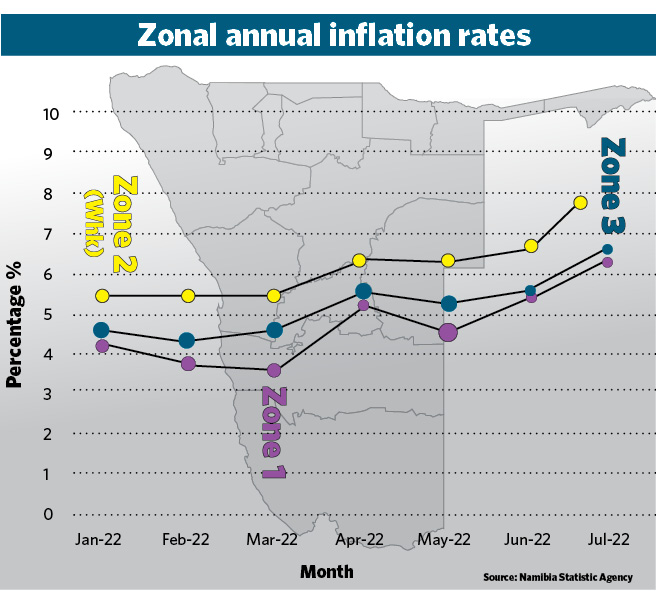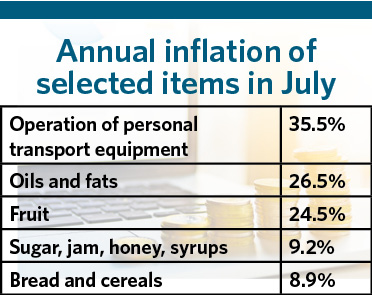Prices in Windhoek increasing at a fast pace
Overall inflation hits 6.8% in July
The 6.8% inflation rate recorded in July is highest rate recorded since July 2017.
The prices of goods and services in Windhoek (Zone 2) have been increasing at a fast pace since the beginning of the year when compared to other regions or zones.Statistics released by the Namibia Statistics Agency (NSA) indicated Zone 2 (Windhoek) inflation averaged 6.1% in the first seven months of 2022 and recorded 7.7% in July.
Zone 3 (//Karas, Erongo, Hardap and Omaheke) annual inflation averaged 5.1% in the first seven months of 2022 and registered 6.6% in July.
In addition, Zone 1 (Kavango East, Kavango West, Kunene, Ohangwena, Omusati, Oshana, Oshikoto, Otjozondjupa, and Zambezi) recorded the lowest inflation rate of 6.6% in July and averaged 4.8% in the first seven months of 2022.
According to Simonis Storm economist Theo Klein, “while transport costs might increase prices of goods in smaller towns across Namibia, Windhoek has other inflationary pressures such as healthcare, transport, education and hotels that are more expensive compared to smaller towns. These services can be more expensive because Windhoek is more developed and advanced compared to smaller towns in Namibia.”
Also commenting on the statistics is local analyst Josef Sheehama, noting that “the main contributing factors to high inflation in Windhoek is the purchasing Power. This means, Windhoek maintaining a high living cost compared to other zones. A surge in demand for products and services can cause inflation as consumers are willing to pay more for the product.”
Outlook
Overall, annual inflation in Namibia increased by 6.8%, compared to 4.0% recorded in July 2021, the highest rate recorded since July 2017, NSA said.
Inflation stood at 6% in June 2022.
Transport, food and non-alcoholic beverages categories were the main two contributors to overall inflation, contributing 20.9% and 8.4%, respectively.
The operation of personal transport equipment was the main driver of transport inflation recording a rate of 35.5%.
Looking at the main drivers of food and non-alcoholic beverages category, oil and fats and fruits continue to be the main drivers of inflation, recording rates of 26.5% and 24.5%, respectively.
“While there are a number of deflationary pressures globally, we expect inflation to remain at elevated levels in Namibia for the next couple of months, owing to international price pressures that are delayed in filtering through to Namibia and due to Rand weakness. Food inflation appears to decline globally, albeit increasing at a decreasing rate, and this can take some time to lower food price inflation rates in Namibia,” Klein [email protected]




